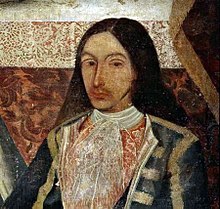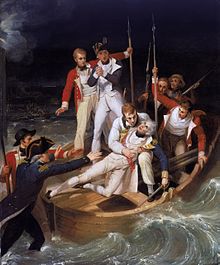Piracy in the Canary Islands
The piracy in the Canary Islands develops due to the strategic situation of the Canary Islands as a commercial bridge between Europe, Africa and America and a crossroads of maritime routes.
The beginnings of piracy in the Canary Islands
The rise of piracy was associated with the discovery and subsequent exploitation of America and the conflicts between the great powers. Although the pirates, in theory, were beyond the control and protection of any nation, they took advantage of, and even came to support them, as long as the victims were their staunch enemies, which is why sometimes it can be confused between a pirate and a privateer. The Canary Islands and the Azores became strategic locations on the sea routes of Europe, America, and Asia (on the route to the Indian Ocean bordering Africa). The precious treasures and species of the newly discovered land were great booty for the pirates. As ships loaded with these American treasures called at the Canary Islands or the Azores on their way to Europe, piracy soon broke out in the seas near the islands. This strategic situation also caused the ships going to America to pass through the islands to supply themselves with water and food, and on the way attack some coastal town.
Pirates of all nationalities acted in the Canary Islands, but mainly they were English, French, Barbary and the Netherlands.
Since the first years of the conquest, there were attacks that were intended to loot and capture indigenous Guanches to be slaves. The Berbers acted destroying the towns that existed in retaliation with the horseback riding that took place in North Africa. In the XVI century, under the reign of Carlos I, the territory reached its maximum extension with the European and American territories. Motivated by the Spanish rivalry with France, the first pirates who acted in the Canary Islands during his reign were Frenchmen who were not satisfied with the ships, but also entered the coastal towns and devastated them. The robbery was habitual in these first pirates. However, during the reign of his son, Felipe II, mainly after the death of his wife María Tudor of England, English pirates began to plague the Canary coasts as a result of the great Spanish-English rivalry. XVI century the Dutch would join this activity.
In the 17th century, piracy in the Canary Islands intensified, largely due to the weakening of the Spanish empire and the numerous wars with France and Flanders. The insecurity, not only for navigating the islands, but also for the life of the islanders in the face of pirate attacks, led to the creation of the figure of the Captain General with both military and political functions. A series of engineers arrived in the Canary Islands to provide towers and castles to the Canary coasts with which to face attacks by pirates and other enemy forces of the Spanish. Among these defensive towers or castles stand out; those of San Andrés, San Cristóbal, Garachico, San Felipe and the Black Castle in Tenerife; In La Palma the Castle of Santa Catalina; In Gran Canaria those of Gando and San Pedro; In Fuerteventura the Castle of El Cotillo and Caleta de Fuste; and the Torre del Águila, in Lanzarote.
In the 18th century, English attacks multiplied. Not only with the aim of obtaining treasures and pillaging, but also with the intention of invading and occupying the islands. Many of these attacks were repelled in the most important cities, but in the smaller islands these pirates were successful due to the defensive weakness of the populations.
During this period, privateers and pirates from the Canary Islands also arose, generally linked to the Atlantic trade with America, who looted British, French and Dutch ships that they found in Canary waters and along the route to the Caribbean. The most prominent privateer from the Canary Islands was Amaro Pargo from Tenerife, whom King Felipe V of Spain frequently benefited from in his commercial and privateering incursions: he was granted a Royal Order given at the El Pardo Palace in Madrid in September 1714 in which he was appoints captain of a commercial ship bound for Caracas. The monarch himself also interceded in the release of Amaro during his detention by the Cádiz Trading House and authorized him to build a ship bound for Campeche, which was armed in privateering.
The fall of piracy in the Canary Islands
Apart from a better defense of the Canaries, a memorable event for these lands was what caused piracy to drop substantially on the islands. This event was Horacio Nelson's unsuccessful attack in 1797 on Santa Cruz de Tenerife.
The purpose of many of the attacks by English pirates was to seize the islands in the name of England rather than pillage. Finally, pirates or corsairs were dispensed with and an English admiral appeared with his fleet on July 25, 1797 off the coast of Santa Cruz de Tenerife. The attack was resisted by Spanish troops, under the command of General Antonio Gutiérrez de Otero, and a French detachment that was on the island. In the confrontation Nelson loses an arm when he is hit by a cannonball, and seeing himself overwhelmed by the unexpected march of the battle, he has to capitulate. Already on land he signs a peace, in which he agrees not to try to seize the Canary Islands.
The increased defense of the islands, together with the decline of piracy, gradually led to the settlement of towns and capitals on the coast, gaining in importance and development compared to those inland.
Pirates and corsairs that acted in the Canary Islands
The Canary Islands suffered frequent pirate looting by various enemy powers of the Spanish Crown. Among which stand out:
- Franceses:
- Jean Fleuryaccompanied by Daniel Blanga (also known as Juan Florín) in 1522.
- François Le Clerc or Pie de palo looted and burned Santa Cruz de La Palma in 1553.
- Nicolas Durand de Villegagnon attacked Santa Cruz de La Palma in 1554, but this time the attack was rejected.
- Jacques de Sores He attacked La Palma without success in 1570, but captured a Portuguese nao killing forty Jesuit religious.
- Jean Capdeville San Sebastián de La Gomera dragged in 1571.
- English:
- John Poole.
- Francis Drake failed to attack Santa Cruz de La Palma in 1585. He also failed in the attack on Las Palmas de Gran Canaria and wanted to resarcise by attacking a little further south of the island, in Arguineguín, but was surprised and had to flee with numerous casualties.
- John Hawkins (known in the Canary Islands as Aquines, by Castroization of his last name) maintained commercial relations with some island owners, even though he also attacked populations along with Francis Drake.
- William Harper attacked Lanzarote and Fuerteventura in 1593.
- Walter Raleigh he attacked Tenerife and Fuerteventura in 1595, Arrecife in 1616.
- George de Cumberland and Berkeley They raided Lanzarote.
- John Jennings attacked Santa Cruz de Tenerife in 1706, which was repelled.
- Woodes Rogers failed in the attack on Santa Cruz de Tenerife in 1708.
- Charles Windham attacked San Sebastian de La Gomera in 1743 and La Palma.
- Hindeses:
- Pieter van der Does did not manage to invade and burn San Sebastián de La Gomera, but succeeded in the looting and fire of Las Palmas de Gran Canaria in 1599.
- Berberiscos (Algerians, Tunisians, Turks...(c):
- Xabán ArraezIn 1593 he plundered Betancuria in Fuerteventura.
- Dogalynicknamed the Turkish, occupied Arrecife (Lanzarote) in 1571, looting, burning and capturing a large number of islanders.
- Morato Arraez attacked Lanzarote in 1586, arrived to Teguise, looting it and taking many captives.
- Tabac Arraez and Solimán They looted Teguise and also attacked San Sebastián de La Gomera in 1618.
Pirates and corsairs of Canarian origin
Among the corsairs and pirates born in the archipelago, the following stand out:
- Amaro Pargo. Born in San Cristóbal de La Laguna (Tenerife), his real name was Amaro Rodríguez Felipe y Tejera MachadoIt's the most famous canary corsair. In his time he came to have the same reputation and popularity as Barbanegra or Francis Drake.
- Dog head. His real name was Ángel García, was born in Igueste de San Andrés (Tenerife). This pirate was a great boat looter, killed in Santa Cruz de Tenerife.
- Simon Romero (sixteenth century)XVII). Better known as Ali Arraez, born in Las Palmas de Gran Canaria. He was caught in his youth while fishing, sold in Algiers and dedicated to the corso. He bought his freedom and ascended to Admiral of the Algerian Navy, obtaining an important status. Famous for his dual personality, since, despite being a renegade that harassed the Canary Islands (although not limited to them only), he also helped the captives (mainly Canarian) to achieve their freedom or, at least, to overcome their slavery.
Contenido relacionado
Bourbon Reforms
Lyre (musical instrument)
Pre-Columbian Civilizations




